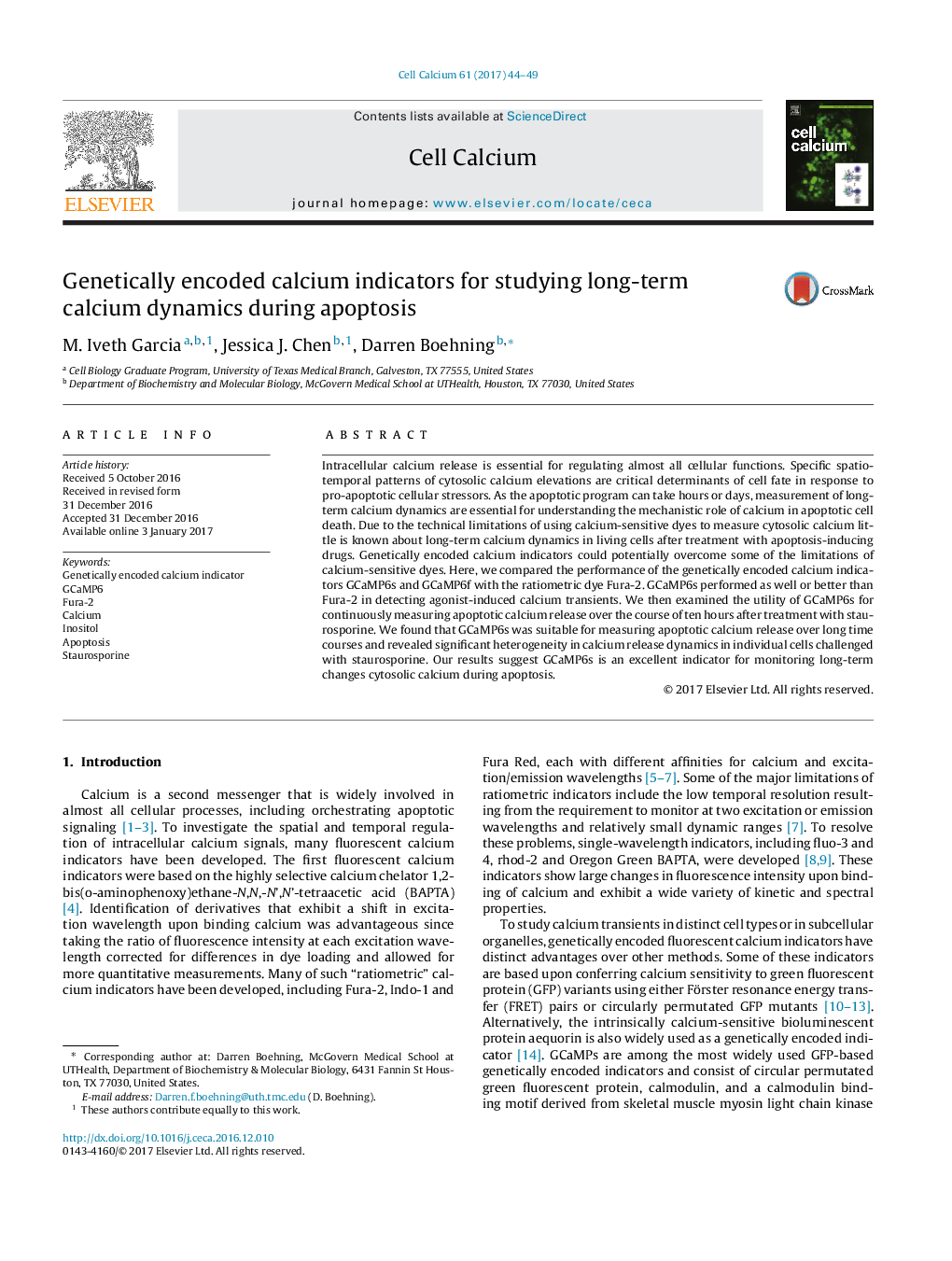| Article ID | Journal | Published Year | Pages | File Type |
|---|---|---|---|---|
| 5530569 | Cell Calcium | 2017 | 6 Pages |
â¢Genetically encoded GCaMP6s indicator performed as well or better than Fura-2.â¢Cytosolic calcium could be measured continuously for hours using GCaMP6s.â¢Apoptotic calcium release induced by staurosporine was highly heterogeneous.â¢GCaMP6s is an excellent general-purpose calcium indicator protein.
Intracellular calcium release is essential for regulating almost all cellular functions. Specific spatio-temporal patterns of cytosolic calcium elevations are critical determinants of cell fate in response to pro-apoptotic cellular stressors. As the apoptotic program can take hours or days, measurement of long-term calcium dynamics are essential for understanding the mechanistic role of calcium in apoptotic cell death. Due to the technical limitations of using calcium-sensitive dyes to measure cytosolic calcium little is known about long-term calcium dynamics in living cells after treatment with apoptosis-inducing drugs. Genetically encoded calcium indicators could potentially overcome some of the limitations of calcium-sensitive dyes. Here, we compared the performance of the genetically encoded calcium indicators GCaMP6s and GCaMP6f with the ratiometric dye Fura-2. GCaMP6s performed as well or better than Fura-2 in detecting agonist-induced calcium transients. We then examined the utility of GCaMP6s for continuously measuring apoptotic calcium release over the course of ten hours after treatment with staurosporine. We found that GCaMP6s was suitable for measuring apoptotic calcium release over long time courses and revealed significant heterogeneity in calcium release dynamics in individual cells challenged with staurosporine. Our results suggest GCaMP6s is an excellent indicator for monitoring long-term changes cytosolic calcium during apoptosis.
Graphical abstractDownload high-res image (196KB)Download full-size image
